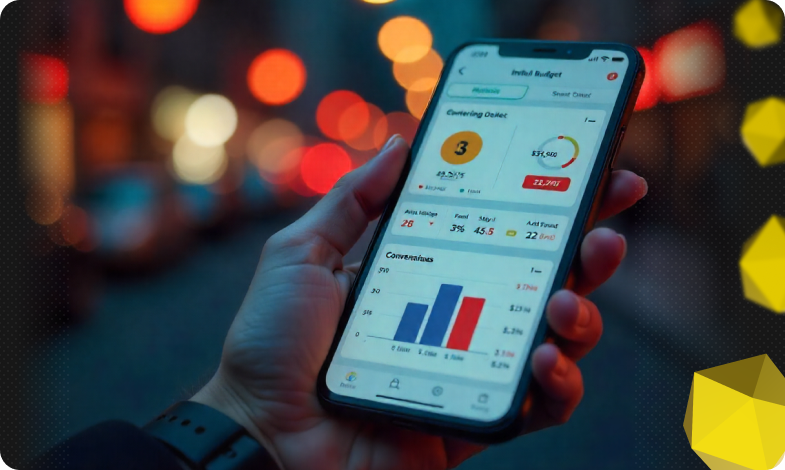Content of the article

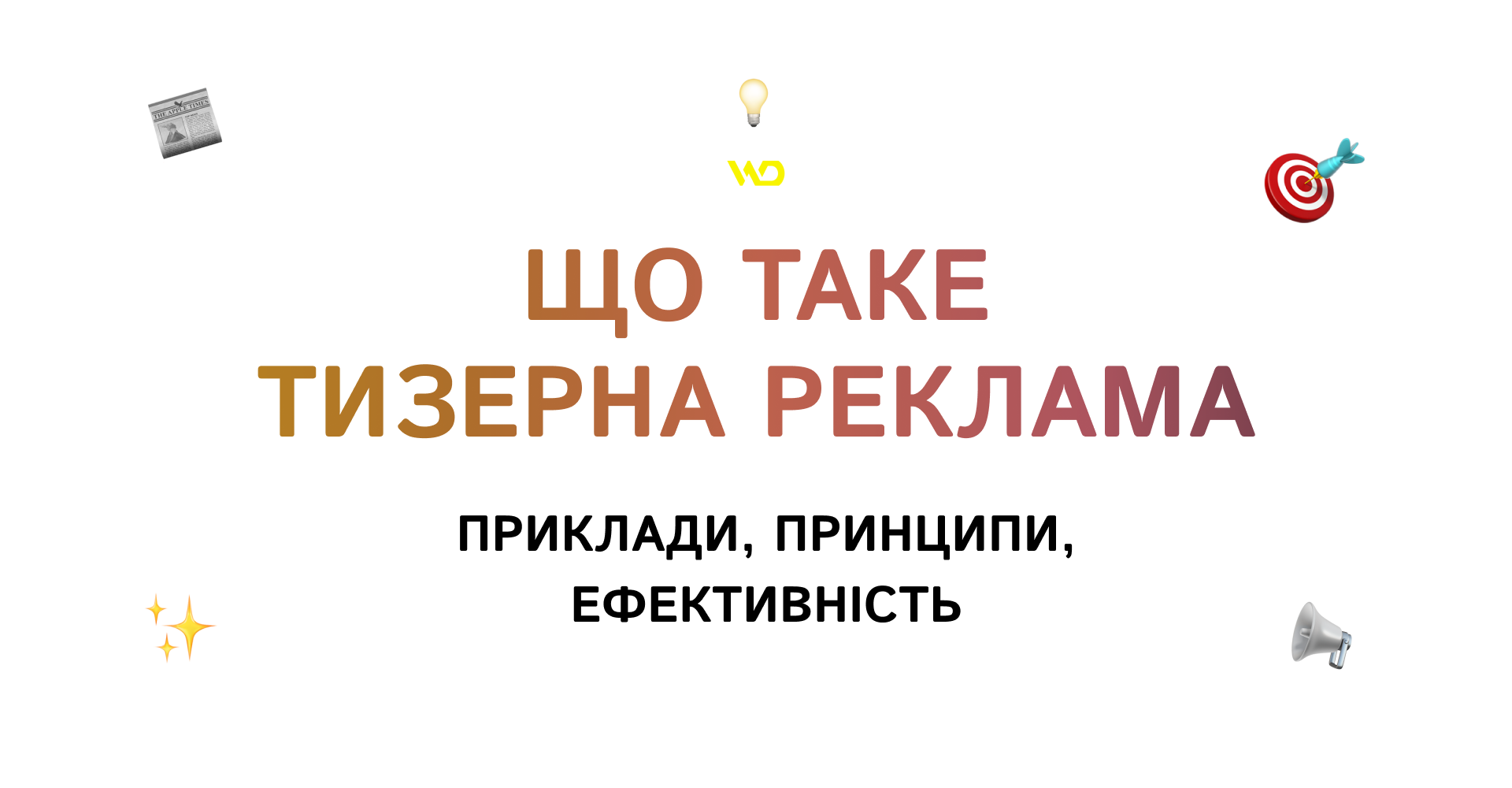
Today, user attention has become a very valuable and scarce resource. Every day, the audience is exposed to hundreds of advertising messages, but only those that evoke an instant emotional response and arouse curiosity have a chance of being noticed. The daily content flow and fragmented media consumption force brands to look for short and effective ways to break through the information noise, and teaser ads remain one of the key tools in this fight.
In this article, we’ll look at what teaser ads are, how they work, analyze their key elements and principles, and share practical recommendations on how to create them and measure their effectiveness.
What is teaser advertising?
Teaser advertising is a format built around partial disclosure of information to arouse interest and stimulate further interaction. Unlike a full-length promo, a teaser does not reveal the entire offer at once. Its task is to create a «gap» of information in the user’s mind so that he or she can «fill in the gap» on his or her own (by clicking, viewing, or going to the website for details).
Psychologically, teasers rely on the incompleteness effect: people seek to complete incomplete information, which, combined with triggers (curiosity, promise of benefits, exclusivity, element of surprise), motivates them to click.
At the same time, teasers attract the part of the audience that is ready to take additional actions, so precise targeting and relevant landing pages are important for conversion.
Teaser ads are especially effective for building interest quickly, for example, before announcing a new product, launching a limited promotion, or creating hype around a brand. A well-planned chain of messages ensures that intrigue turns into a targeted action rather than disappointment.
How teaser ads work
A campaign can be thought of as a sequence of steps: attract attention → increase interest → direct to a relevant channel to complete the action.
- Attention hook.
This is a sharp visual or headline that stops the eye in the flow of content (product silhouette, unusual question, contrasting shot). The simpler and clearer the hook, the faster it will work. At the same time, it’s important to adhere to brand identity so that the user feels a connection between the intrigue and the brand.
Here are short examples for reference:

Additional advice: prepare 2-3 variants of previews/first shots and test them in parallel – this will give a quick result and help determine which «hook» works best.
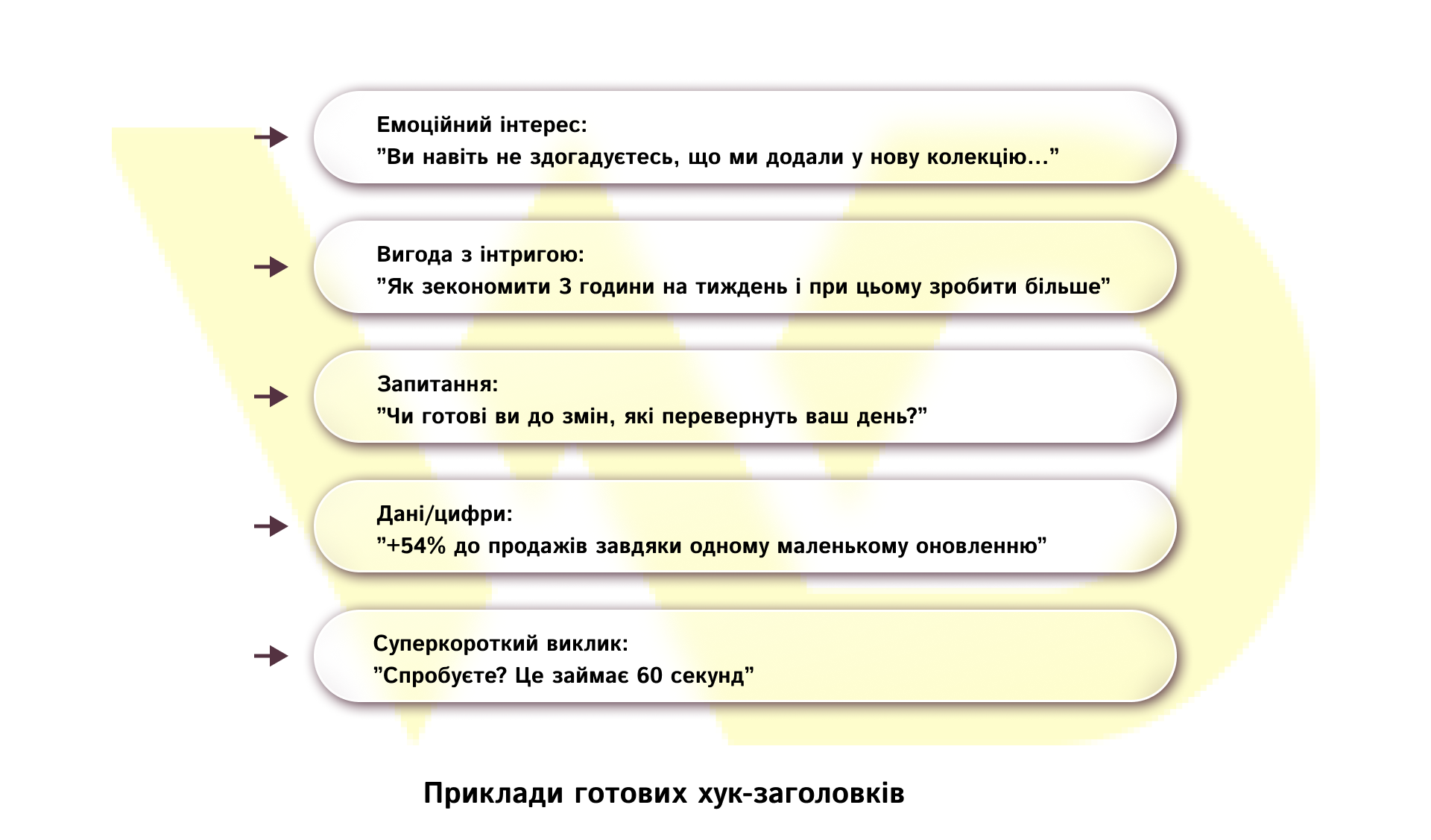
- The effect of incompleteness (curiosity gap).
This is a technique when a teaser deliberately leaves information incomplete to arouse interest and motivate the user to get answers. The right intrigue encourages a click, while excessive intrigue irritates and repels.
To implement this principle, give a hint, but don’t promise the impossible. Formulate the intrigue in such a way that after the transition, the user immediately receives the logical part of the answer (a short benefit or explanation), and deeper details are the next step. In a teaser, ask one question or one incomplete image, not several at once.
For example:
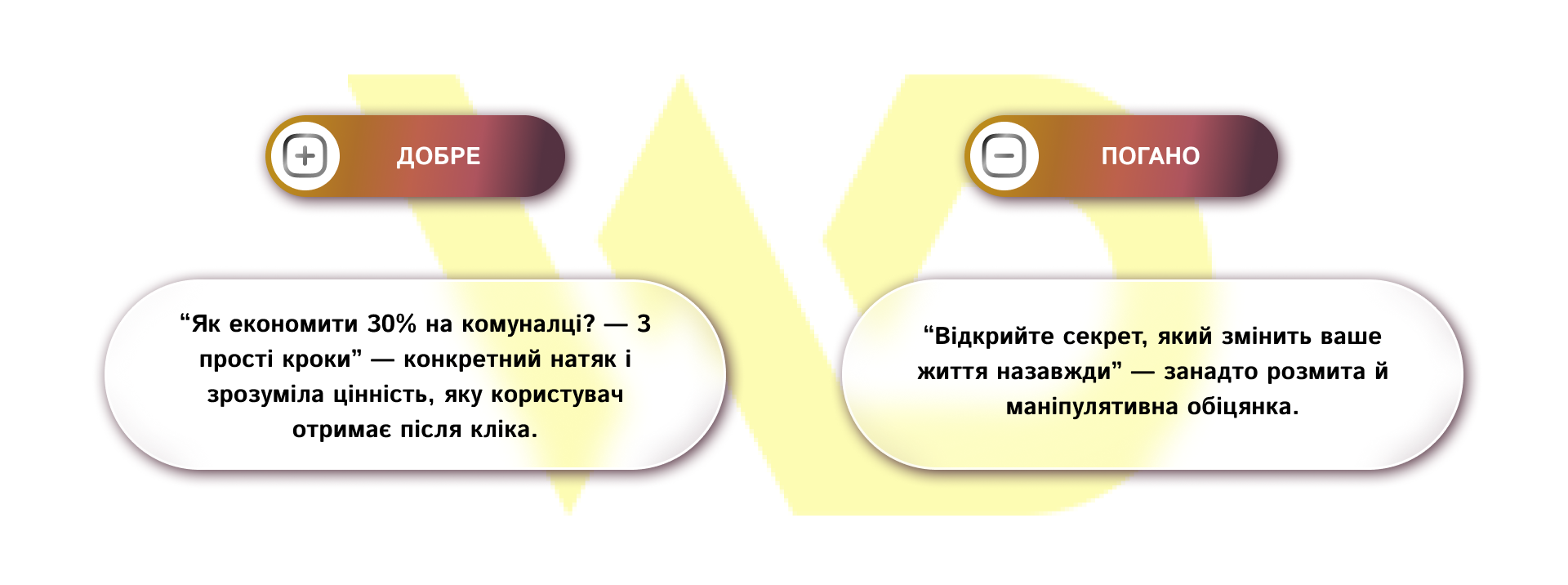
It’s worth a try! Build a quick disclosure into the first block of the landing page: a short answer or a useful checklist to confirm expectations and keep people interested.
- Routing and relevance (logical conclusion).
This is a rule about where a click should lead: to a page that logically completes the intrigue and provides the expected benefit. Be sure to check that the expectation created by the teaser and the offer on the landing page match.
Create targeted landing pages for each type of teaser and audience (cold vs. warm). Do not drive clicks to the main page of the site – people want an instant response. Use different page variants for different segments (short quiz, instant coupon, explainer video).
Quick examples:

Tip: think about the user’s path after the click in advance – from the teaser to the final action (pre-order, subscription, coupon). This will reduce friction and increase the likelihood of completing the action.
- Frequency and rotation of creatives.
This is the management of how often a user sees the same teaser and how often you replace creatives to avoid audience fatigue.
Plan several variants of creative at once (at least 3), set limits on the frequency of displays, and update banners or previews at specified intervals. Don’t wait until the creative «goes to zero» – replace it proactively.
Examples:

Useful. Have several alternative hooks and visuals in stock – this will allow you to quickly adapt to the audience’s reaction and keep your budget efficient.
- Measurement and optimization cycle.
This is a constant process of data collection and adjustments: test → analysis → optimization → scaling. Without this, the teaser remains a beautiful picture without a business result.
Set up simple experiments: run several creatives and versions of the landing page in parallel, record which hooks work best, and scale the winners. At the same time, don’t change too many elements at once – otherwise it will be difficult to understand what exactly worked.
For example:

Tip: Set simple internal rules: minimum test time, criteria for removing a variant, and an action plan in case of poor results. Maintaining discipline will allow you to draw better conclusions and quickly improve your campaigns.
Stick to this basic set and intrigue will stop being random and turn into a manageable engagement tool. In the next section, we will analyze the key elements of a teaser in more detail – how to make each of them truly effective.
Key elements of an effective teaser
The effectiveness of a teaser depends on the coordinated work of all its components. Below are the practical components that you should pay attention to when creating a teaser.
Visuals (image, composition, quality)
The first thing that stops a user. Use a single strong image or a clean video frame without collages, and be sure to provide high resolution and a minimum of text on the image. The product or central motif should be clearly in focus, without unnecessary empty space. Google advises avoiding complex collages and excessive overlays, focusing on one distinct object of attention.
Headline and text
Short, intriguing, clear. Usually, 8-12 words or 25-40 characters are effective for social media ads, but it’s worth testing longer versions in other channels. A clear benefit («What you get») or an element of uncertainty («You won’t believe it…») increases interest. HubSpot’s research and Meta’s recommendations confirm that focusing on the key benefit significantly increases CTR.
Format and technical requirements
Choose the format for the channel: static banners for native networks, short videos of 3-7 seconds for social networks, and responsive creatives for display. Use several sizes and variants of images and text so that platforms can optimize impressions.
A rule of thumb is to prepare 3-4 variants of creatives for one ad group.
CTA and relevant landing page
A button or link should lead to a page that logically completes the intrigue of the teaser (a short landing page or a page with a detailed offer or video). The CTA should be concise and meet the user’s expectations (for example, «Details», «Learn more», «Get a coupon»). The mismatch between the teaser and the landing page leads to a high loss of traffic and a drop in ROI – this is a fundamental mistake that should be avoided.
Targeting and personalization
A teaser works best when it reaches an interested audience. Use remarketing, look-a-like audiences, and behavioral segments. Personalized messages, such as message localization, adaptation of the offer to a specific segment, increase the relevance of clicks and traffic quality.
Testing, frequency, and rotation
Since teasers burn out quickly, limit the frequency of impressions and regularly update your creatives. Conduct A/B tests of headlines, images, and CTAs to find the most successful options. Analytics will help you understand which ads to scale and which to turn off.

Tip: change only 1 key element in the variants (for example, a visual or a headline) to know exactly what influenced the result.
Audio and video features (for short videos)
In video teasers, it’s important to grab attention in the first 1-3 seconds. Ensure that the video is understandable without sound (use subtitles or a strong visual focus) and adapt the aspect ratio to the placements. This improves the reach and reduces the likelihood that the user will skip the content because they are not ready to listen to the sound.
Thus, a strong teaser is a synergy of clear, high-quality visuals, a concise title with a trigger, a technically adapted format, and a logical conclusion on the landing page. Combined with precise targeting and fast creative rotation, this ensures maximum results.
Examples of successful campaigns
History shows that the teaser strategy works in a variety of settings – from independent films to tech giants and national services.
The Blair Witch Project
A small team created a story so skillfully that fictional «found» footage, fake police reports, and a website with documents turned into a real media storm. With a shoestring budget, the film received millions of page views and grossed a solid box office, proving that a strong teaser story can generate viral interest without a lot of investment if the idea and distribution work in concert.
Apple
Demonstrates the phased management of expectations during iPhone announcements. Here, teasers are not a one-time gimmick, but part of a well-thought-out PR strategy: limited clues, controlled leaks, and the scale of presentations create a sense of occasion for the media and the audience. This approach turns the product launch into an anticipated moment, significantly increasing the impact of press activities and increasing the audience’s readiness to buy at the time of release.
Tesla Cybertruck
This is the case when hype is created as a result of an unpredictable incident. The announcement was a prime example: limited renders and the mystery of the design aroused interest, and during the presentation, a technical error with the window instantly made the show go viral. The result was tens of thousands and later hundreds of thousands of pre-orders within a short time, illustrating that attention, even if provoked by a mistake, can be quickly monetized with accessible pre-order mechanics and a clear business proposition.
HBO
In the entertainment content segment, the company showed how teasers work as part of a large-scale cross-media operation. Short, atmospheric Game of Thrones trailers, supported by interactive promotions and partnerships, collected tens of millions of views per day and supported discussions between seasons. This once again emphasized that teasers are most effective when they are part of a larger communications ecosystem.
Application in Ukraine
Local experience shows that teaser formats are actively used by marketplaces, banks, retail projects, and media platforms to quickly reach and test offers.
For example, OLX regularly uses promotional tools to increase the visibility of ads and scale certain categories. Monobank demonstrates how short video campaigns and teasers combined with mobile analytics help to quickly increase app installs and user interest. Retailers and marketplaces (for example, Rozetka) use teaser activations in seasonal promotions, which shows how the right combination of creative and targeting gives a noticeable increase in traffic and sales.
So, it is important to understand that even though the visibility rate can increase many times over, without a prepared post-click path, most conversions remain unqualified. It is the combination of coverage (teaser) and clear post-click operational logic that turns traffic into business results.
Advantages and limitations of the format
Teaser ads, like any digital marketing tool, have their strengths and weaknesses. To effectively integrate it into your strategy, it’s important to understand where it works best and where it can cause problems.
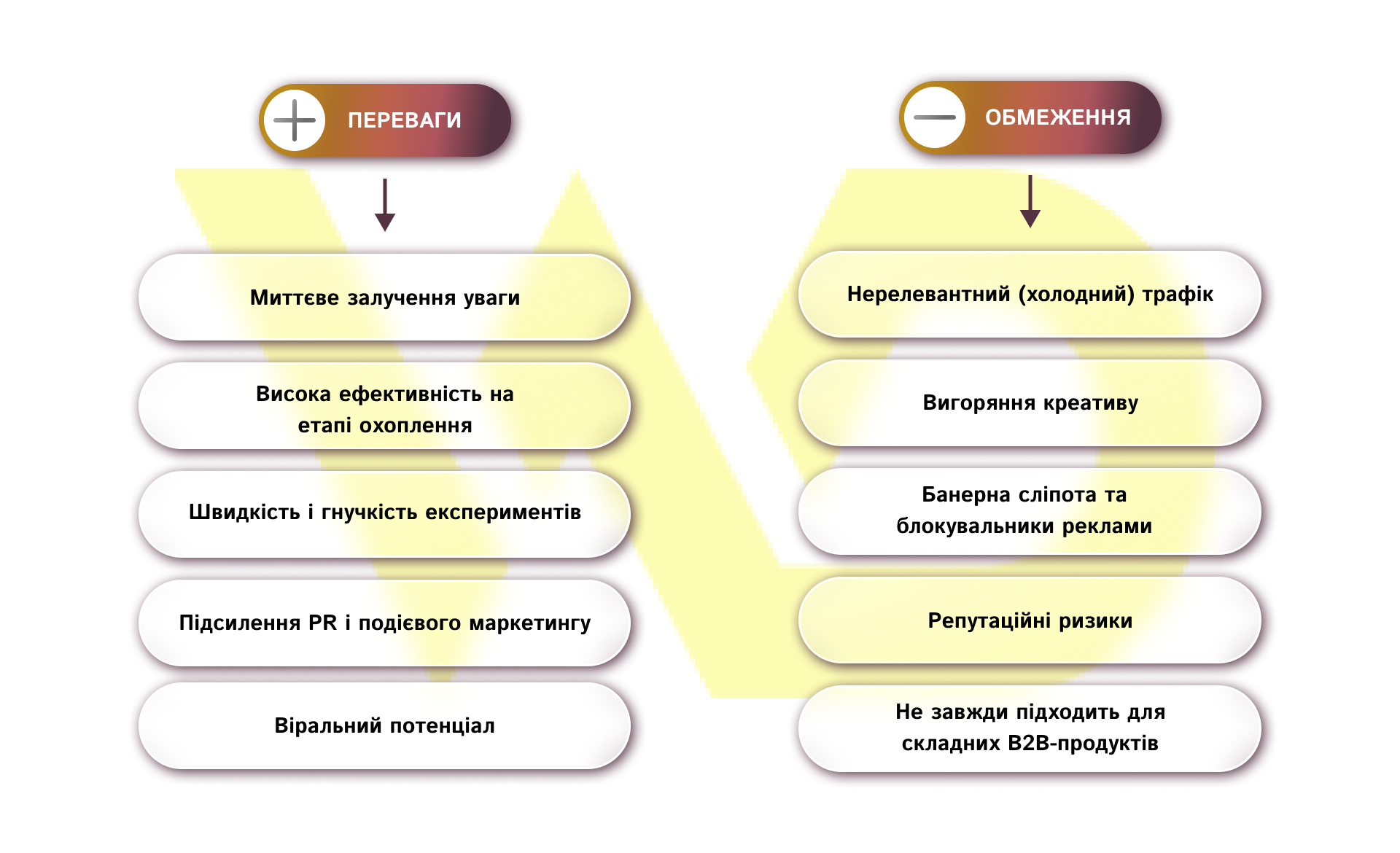
Let’s take a closer look at the advantages first:
- Instant attention grabbing. A teaser creates an entry point into the user’s mind – a short visual or phrase interrupts the scroll and triggers an emotional reaction. On mobile devices, the decision to interact is made in seconds, so a well-designed hook gives a high CTR even with a limited budget.
- High efficiency at the outreach stage. Teaser formats allow you to reach a wide audience for a small amount of money and create a basis for further remarketing. If the goal is to «hook» the user on the information chain (awareness → interest), a teaser often provides a better ROI at the stage of getting to know the product than complex long formats.
- Speed and flexibility of experiments. Several variants of banners or short videos can be prepared quickly, allowing you to test headlines, images, and CTAs in parallel. This speeds up optimization: the winning variants are scaled up, while the «burned out» ones are disabled.
- Strengthening PR and event marketing. In omnichannel campaigns, a teaser pushes information to the press and builds anticipation before the release, creating synergy with PR events and social media.
- Viral potential. A well-constructed teaser can spread on its own through social media discussions, media publications, and user reposts. This creates additional coverage without the cost of additional advertising, and sometimes brings the brand to the top of the information field.
But, of course, there are also disadvantages:
- Irrelevant (cold) traffic. A teaser attracts a wide audience, but not all clicks are converted. This can increase the bounce rate and lead processing costs. To minimize this, immediately plan remarketing chains (from intriguing teasers to informative ads and personalized landing pages).
- Creative burnout. Users quickly get used to a single hook – CTR drops in a few days or when the optimal frequency of impressions is exceeded. This leads to an increase in CPC.
- Banner blindness and ad blockers. Part of the audience ignores banners or uses ad-blockers, which reduces the actual reach. This reduces the effectiveness of standard display campaigns. To «break through» this defense, use native networks (discovery/native), integrate into content and social networks; invest in high-quality creative with interactive elements to «break through» ignoring.
- Reputational risks. Excessive intrigue or manipulative headlines can lead to disappointment and a decrease in brand trust. For example, if a teaser promises more than is available on the landing page, users will feel deceived. To avoid losing trust, adhere to ethical standards and quickly reveal the intrigue (for example, with valuable content or a coupon).
- It is not always suitable for complex B2B products – in such cases, the teaser should be supplemented with detailed materials immediately after the click (technical documents, case studies, demo webinars).
The advantages and disadvantages can be balanced if you clearly define the campaign goal in advance, choose the right audience, and create a chain of interaction where the teaser is only the first, but not the only step. And, of course, it is important to measure the effectiveness of your campaigns in a timely manner using clear metrics, which are discussed below.
How to measure the effectiveness of teaser ads
Evaluating the effectiveness of a teaser campaign requires a comprehensive approach, as CTR alone does not give a complete picture. Therefore, you should analyze the following indicators:
- CTR (Click-Through Rate) – the ratio of clicks to impressions (%). It shows what percentage of users who saw the teaser clicked on it.
- CPC (Cost Per Click) – cost per click. Indicates the cost of attracting a visitor.
- CR (Conversion Rate) – the ratio of the number of conversions to the number of clicks (%). It shows what percentage of users performed the target action (registration, purchase) after clicking. Even a high CTR and low CPC do not guarantee success if the CR is low.
- Bounce Rate – the percentage of users who left the page immediately. A high bounce rate signals that the content of the landing page does not meet the promises of the teaser.
- ROI (Return on Investment) and ROAS (Return on Ad Spend) are financial indicators. ROI shows the profitability of a campaign, and ROAS shows how many dollars of revenue are generated for every dollar spent.
- Frequency – the average number of impressions per user. Too high a frequency leads to creative burnout and a decrease in CTR. In teaser networks, it is optimal to have 3-5 impressions per user per week.
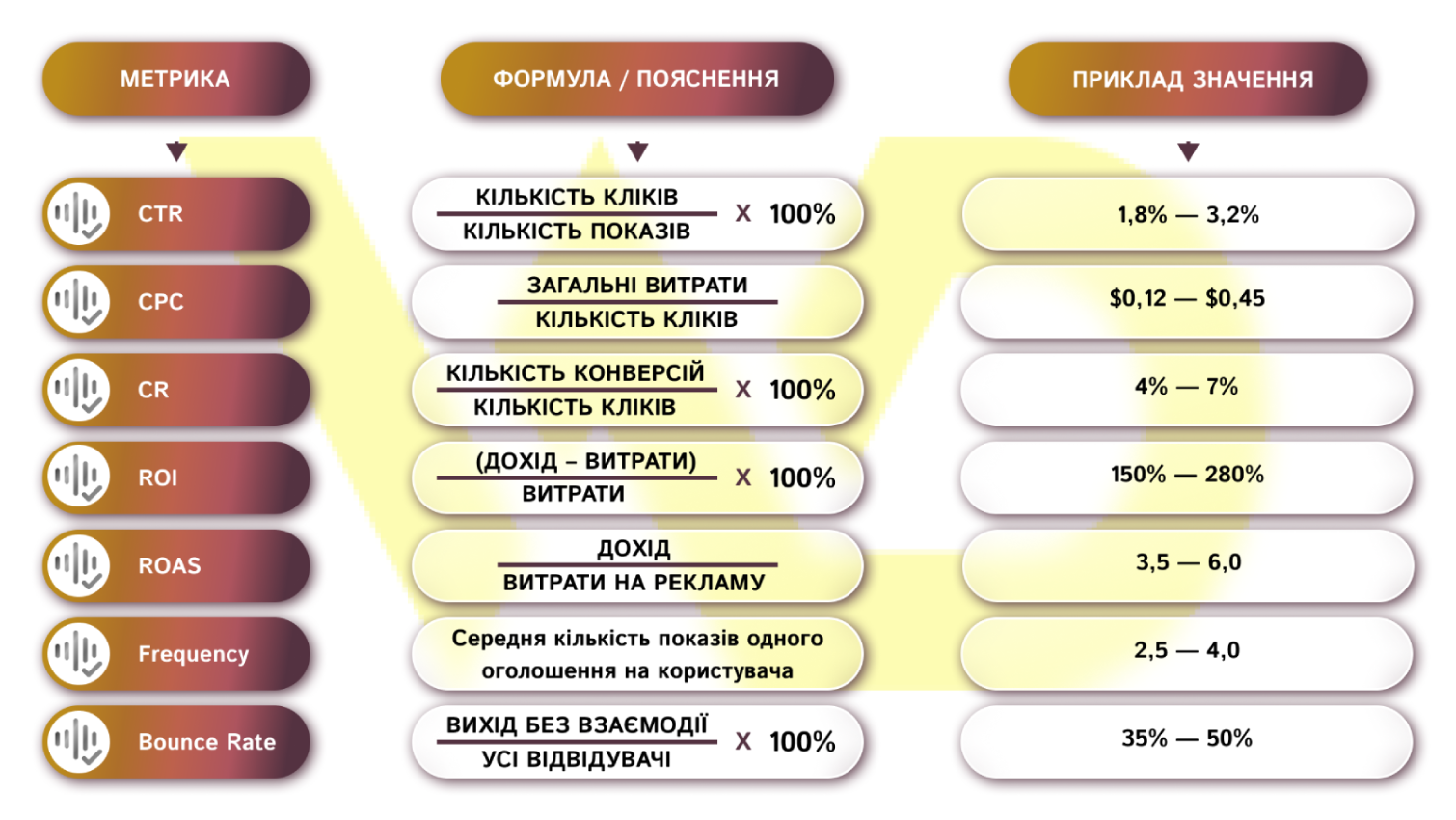
To objectively evaluate a teaser, set up end-to-end analytics: track input metrics (CTR, CPC) and output metrics (leads, sales). Constantly test creatives and ensure that the teaser intrigue is as consistent as possible with the content of the landing page.
Practical recommendations for launching teaser ads
The effectiveness of teaser ads largely depends on the choice of channels, format, and planning of stages. First, determine where your target audience is most active: native networks (MGID, Taboola, Outbrain), social networks (Facebook, Instagram), and media platforms. Choose the format (static banner, short video, etc.) based on the specifics of the product and channel: short videos work well on social media, and native blocks work well on information sites.
And remember: the success of a teaser depends on creativity and precise targeting. Intrigue and mystery are only the beginning. It’s important to understand the needs and interests of your audience so that the message resonates with them and leads to the desired result. The combination of creativity, analytics, and proper channel setup will help you maximize the effectiveness of teaser ads.

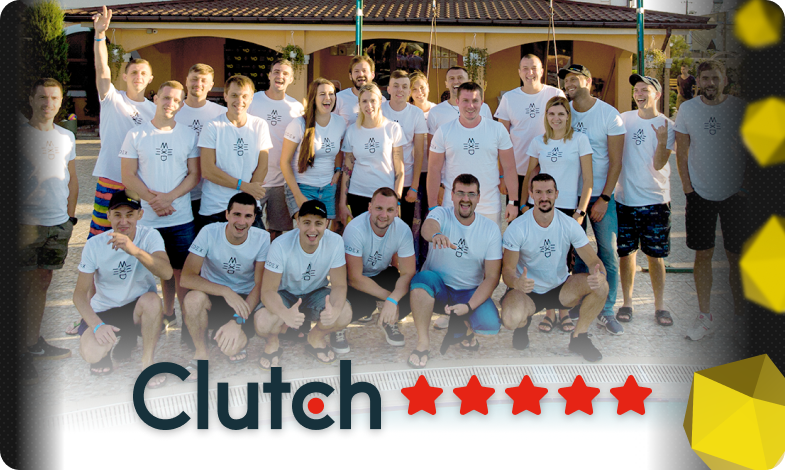




 10/11/2025
10/11/2025  875
875



